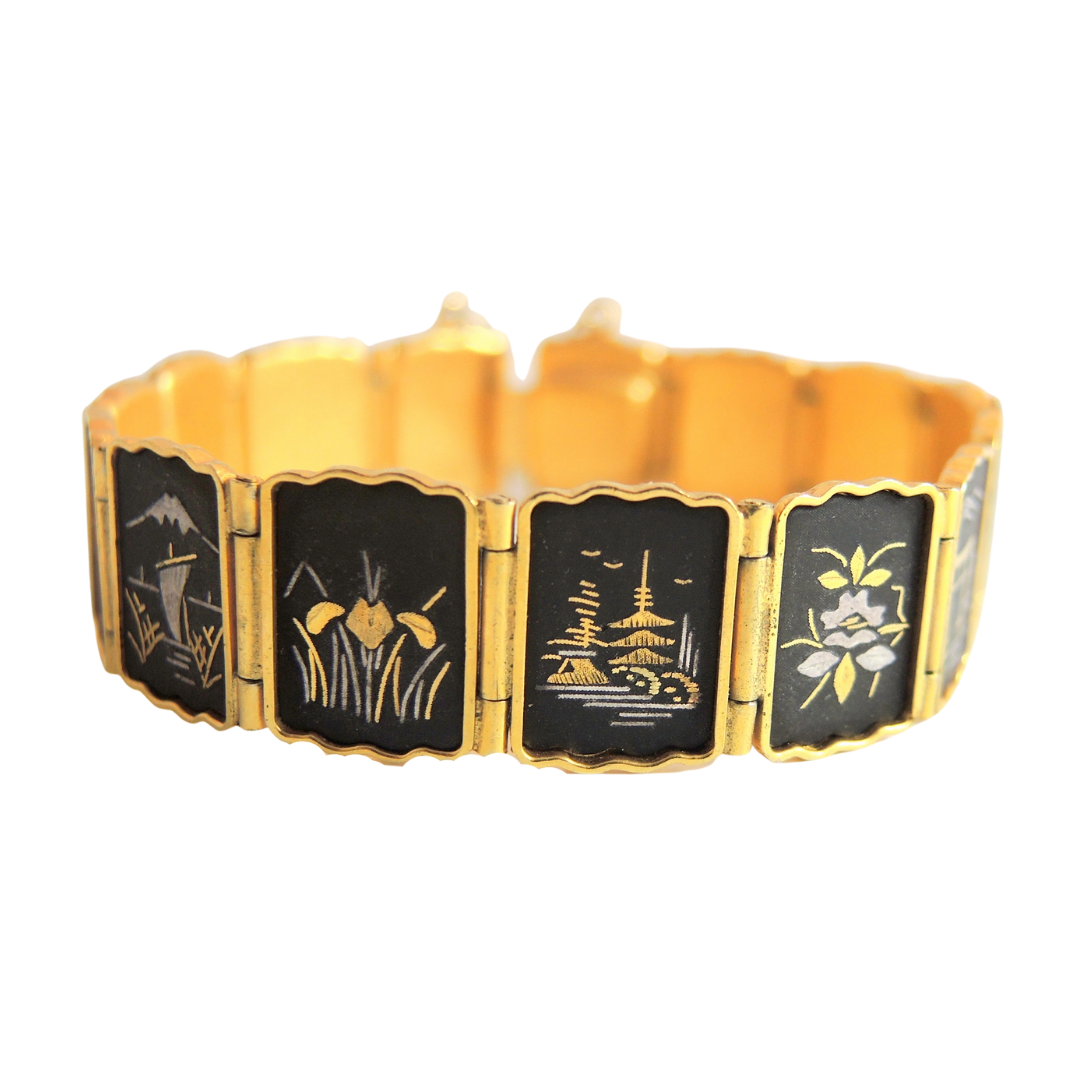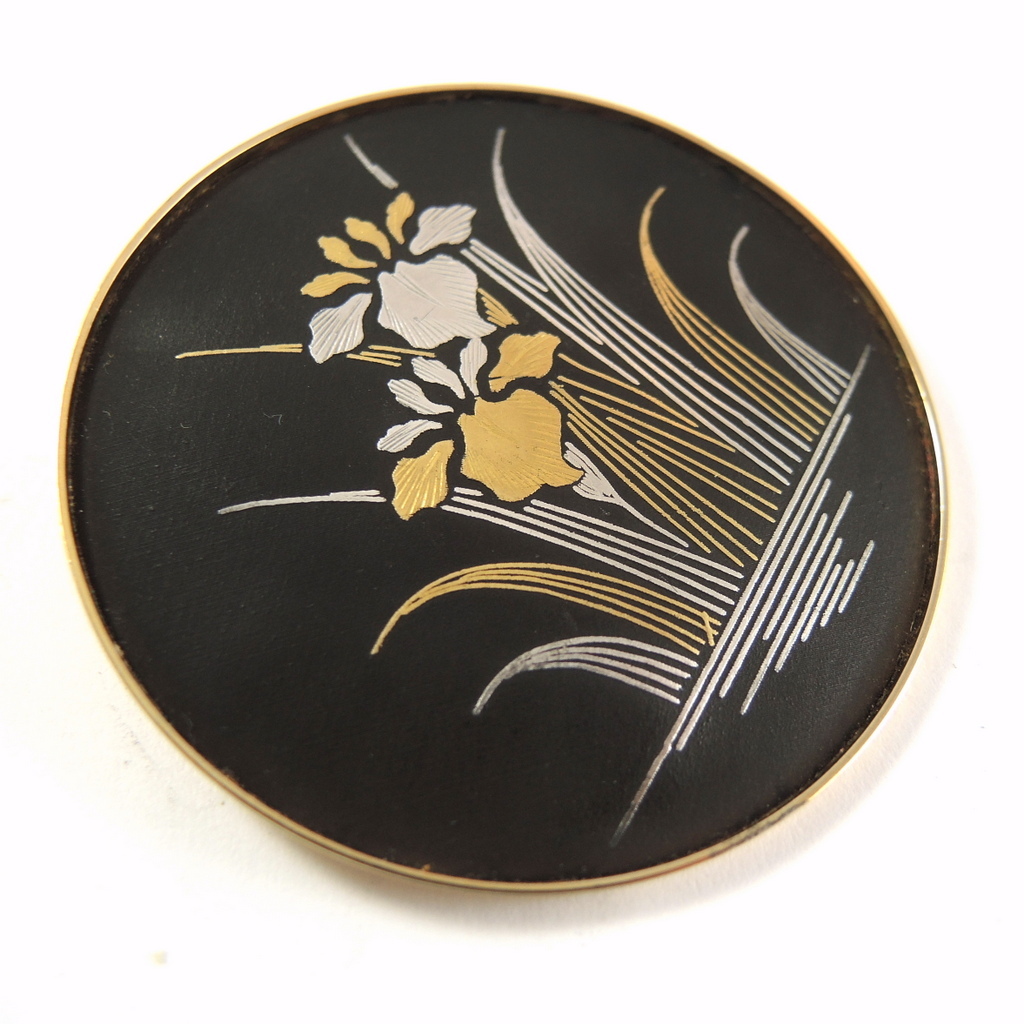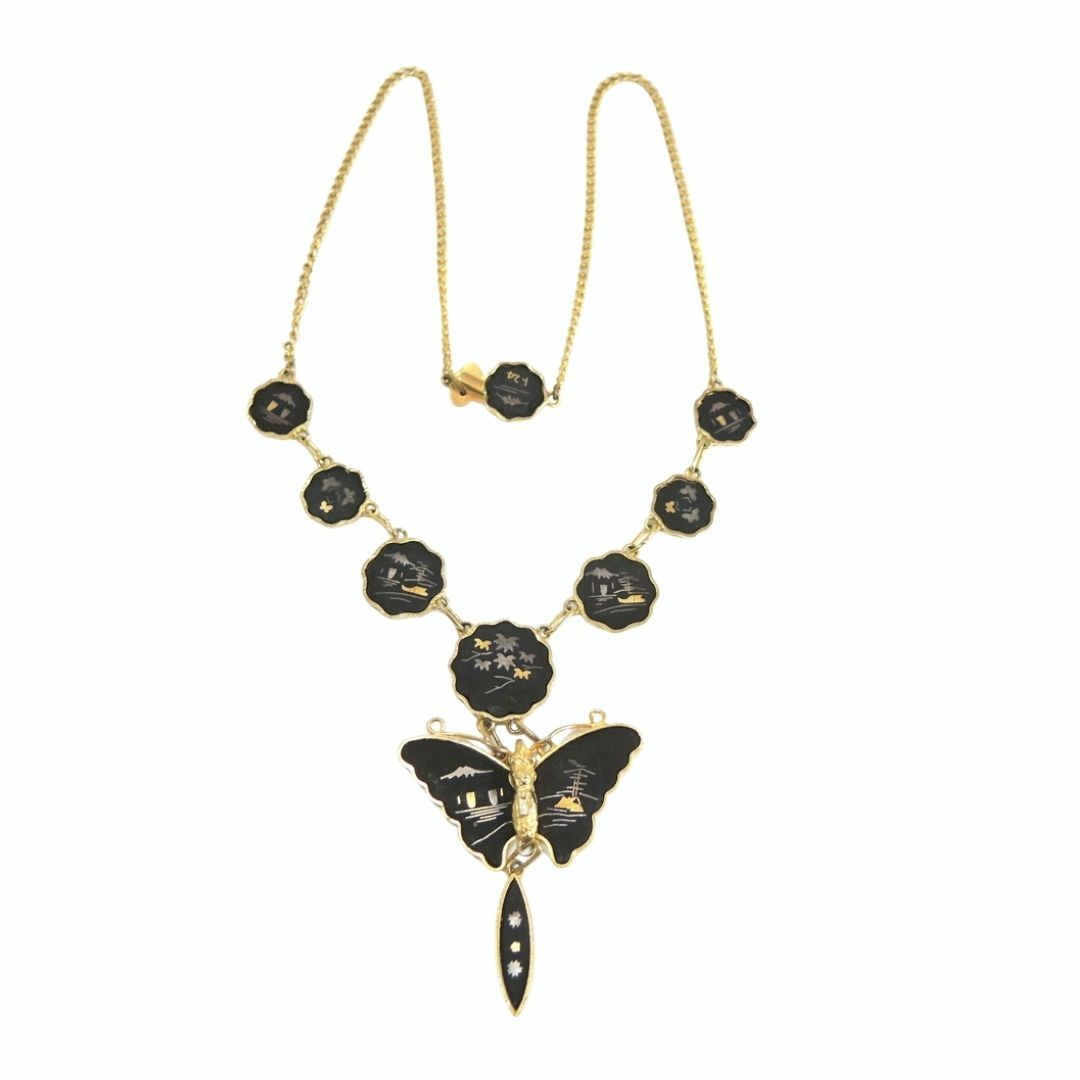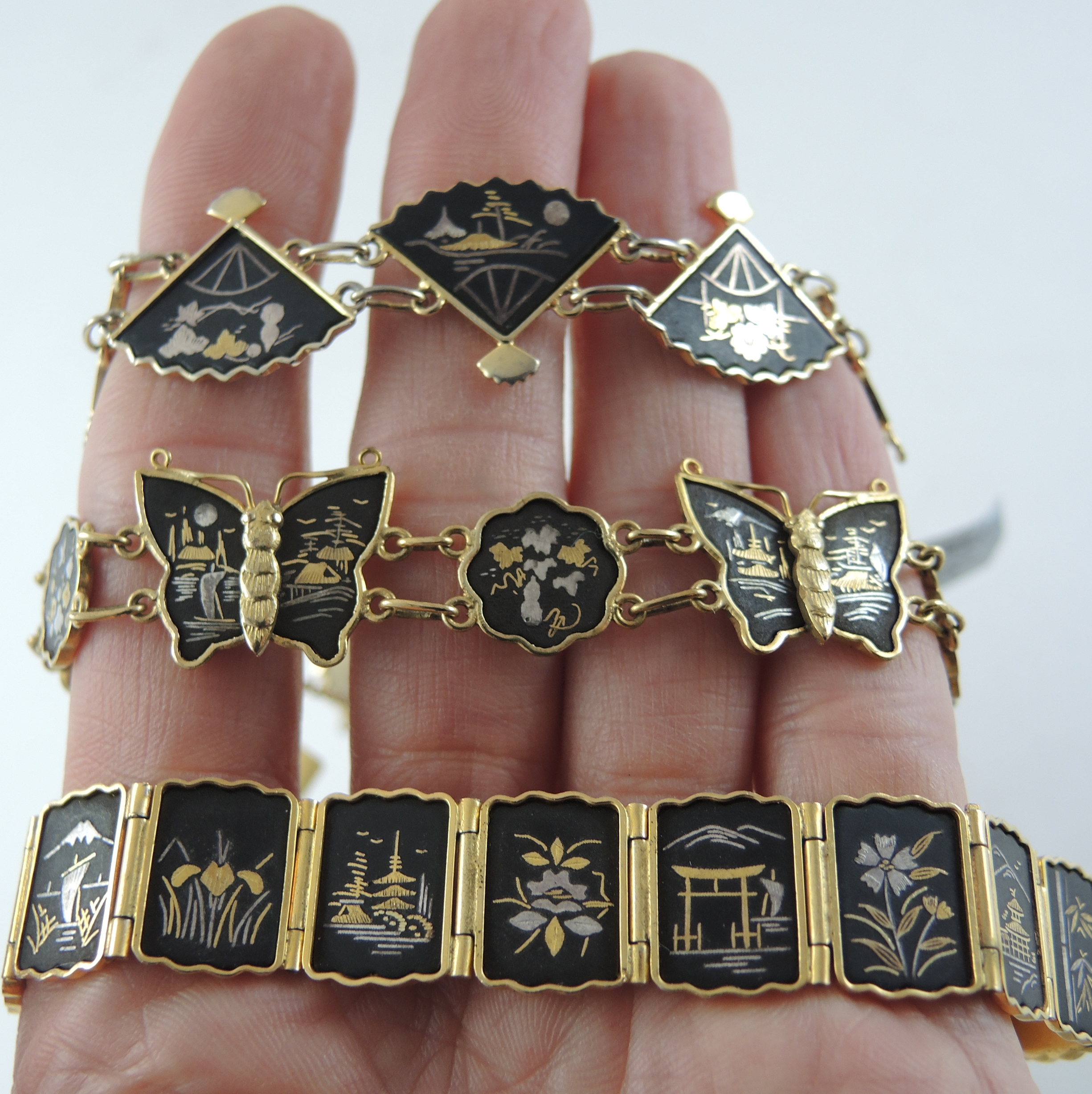Posted by Emily on 16th Jun 2022
An introduction to Japanese Damascene Jewellery

Japanese Damascene jewellery is hand made with origins reaching back many centuries.
The process of hand crafting the designs requires time and skill.
Flat steel plates are incised with ornate designs, which are inlayed with gold (often 24ct) and silver wire.

Japanese Damascene jewellery has a long tradition of high quality craftmanship and design.
The steel is then burnished (oxidised) at high heat, which turns it black.
The silver and gold sections are then often etched or engraved with extra detail.

The extra engraved detail on this Japanese Damascene brooch can be seen on the fine detailing on the flowers.
Lastly, the steel panels are set, often within gold or gold plated settings.
Often the settings are in decorative shapes such as fans, flowers and butterflies.
The designs themselves also feature uniquely Japanese iconography such as Mt Fuji, Temples, Flowers, birds and animals.

Designs often feature shaped ornate settings for the panels and uniquely Japanese iconography.
Most commonly, Damascene is used for Jewellery, but it is also found on other small decorative items such as cigarette cases and trinket boxes.
The pieces shown were made in the 19050's and 1960's.
At emprades, we offer a range of authentic vintage Damascene items, be sure to see what we currently have in stock.

For a great range of vintage Damascene jewellery, check out emprades vintage + design
Lastly, it is work noting that not all Damascene jewellery is made in Japan.
The Toledo region in Spain is famous for its decorative Damascene. With a discerning eye, it is easy to tell the difference. Spanish Damascene is set with prongs, and will not contain the distinctively Asian designs. The designs are more decorative than 'scenic' and often contain 'bright cut' engraving with geometric patterning.
If you would like to know more about a piece you have, or are interested in buying a item of Damascene please feel free to get in touch.
